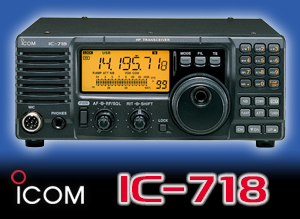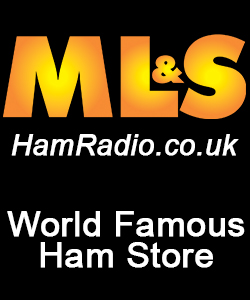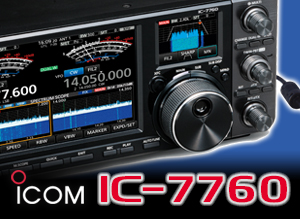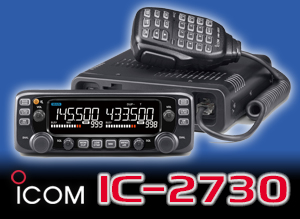GR2HQ 2024 Story
Buoyed by the success of our HQ team in having come third in the IARU Contest HQ table in 2023, we planned to make few changes to the configuration of the Host stations for 2024, however the 20m SSB station was moved to North Yorkshire to Neil G6MC’s contest site where a strong team, including a couple of newcomers to the event were available for 2024 and a significant aerial construction project was carried out to establish a competitive 20m SSB station there.
It is important to note that each year we ask if there are any contest enthusiasts who would like to join the operating team, either at a host station or as a partner operator. There is room for both those who are experienced in contest operating and those who are starting out. There are some unusual aspects to taking part in a networked team, when contesting is most often a single-handed pursuit; this is particularly true of the use of Partner Mode where trusting the callsigns provided by partner operators is key to success. Great use was put to partnering in 2024, particularly on 15m.

(Map showing GR2HQ host stations in 2024)
The teams at each host station have produced summaries of how they found the contest (team member call signs in brackets).
160m CW@G4FAL
On 160m CW we used a top-loaded vertical to transmit and had two beverage receiving aerials, one East the other West. We started operating at 7pm clock time (1800 UTC) and found things picked up as it got dark. It is barking madness of course to try to work DX in the middle of summer on 160m, but about two hours before sunrise we had a short period of good propagation to North American and the Caribbean, when our RBN spots were the loudest of any of the European HQ stations. We worked every callsign that appeared in our band-map and kept operating until there were no more callers and nothing to be heard, which was shortly after sunrise. (M0HDF G4MJS G4FAL)
160m SSB@M6T
160m SSB used an Inv-V dipole at 90ft – contacts on 160m SSB in this contest are almost exclusively with Europe and a high dipole is pretty effective. Unfortunately, the field where our 9 circle receive antenna normally sits had not yet been cut for hay so it was impractical to re-install that antenna, so we used a temporary K9AY receive antenna to give some extra receive options. Some stations were better copy on the transmit antenna, some on the receive antenna. High absorption due to high SFI, high summer noise levels and activity drifting to the HF bands makes 160m SSB very slow going, but the team stayed at it from 1800 UTC until a little after sunrise and tried to squeeze every QSO possible out of the band. (from G4PIQ G0AEV M0HKB G2NF G0AKC G0VJG)
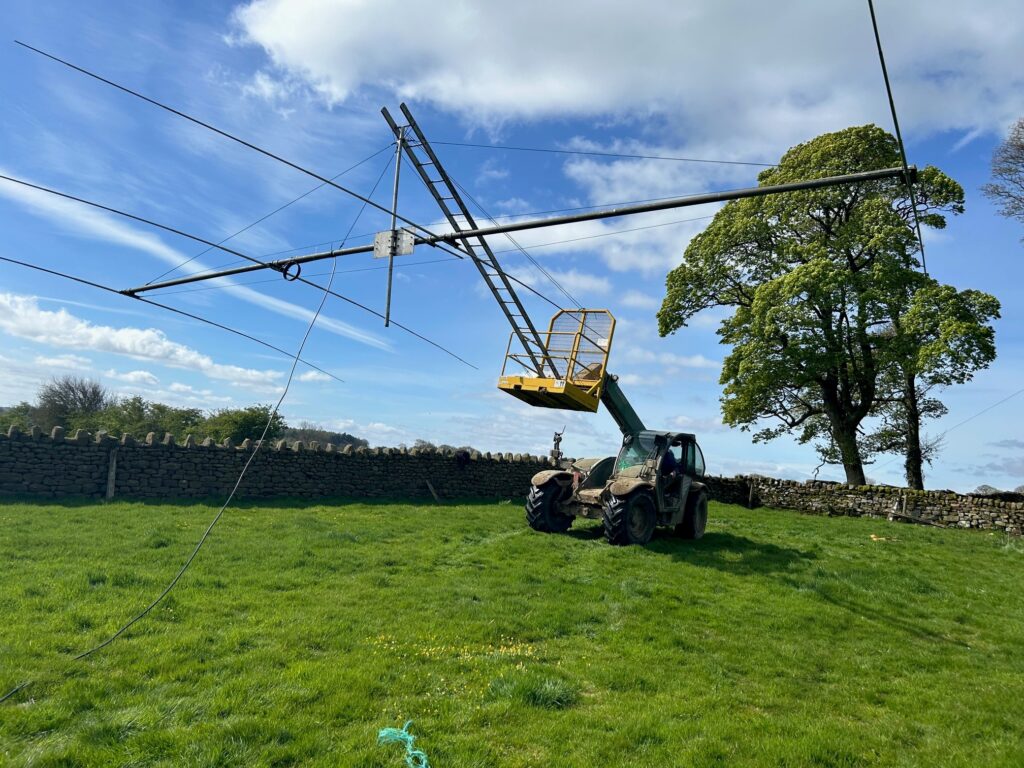
(20m 4 element beam being uploaded at G6MC)
80m CW@G0DWV
Here we had a high dipole and a four square array for transmitting, as well as separate directional antennas for receive. As usual, this band/mode slot started off very slowly on the Saturday afternoon before the busy period in the evening and overnight when the DX was able to be worked. Not being as busy as the higher bands, we were able to pick off multipliers on the second receiver while calling CQ, especially in the long periods when no calls were answered. A few stations did call us on Saturday afternoon and Sunday morning; it would be great if more G stations tried at those times in future years – we have excellent receive capabilities so even during the daylight hours, QSOs are possible. And at these times, there is less QRM and noise to contend with, so even modest stations should be able to make a QSO with us. As we approached darkness in North America, around midnight our time, that continent provided a decent number of contacts. (M0NKR G4PVM G0DVJ)
80m SSB@M6T
Like the CW station, 80m SSB had a high dipole and a 4-square transmit antenna. As we sit at the top of the sunspot cycle, high absorption makes this mode very slow during the daytime, but as we draw towards sunset, the band improves and there are lots of Europeans to work. Noise levels were high this year, but not as bad as we have had some years. Very limited numbers of Asian stations were worked on 80m SSB this year. The most interesting period for 80m SSB is the slot between midnight and sunrise where we had a decent opening to North America and the 4 square antenna really came into its own. After that, it’s the long trawl through Sunday morning where we picked up some more UK stations and some more nearby Europeans. (from G4PIQ G0AEV M0HKB G2NF G0AKC G0VJG)
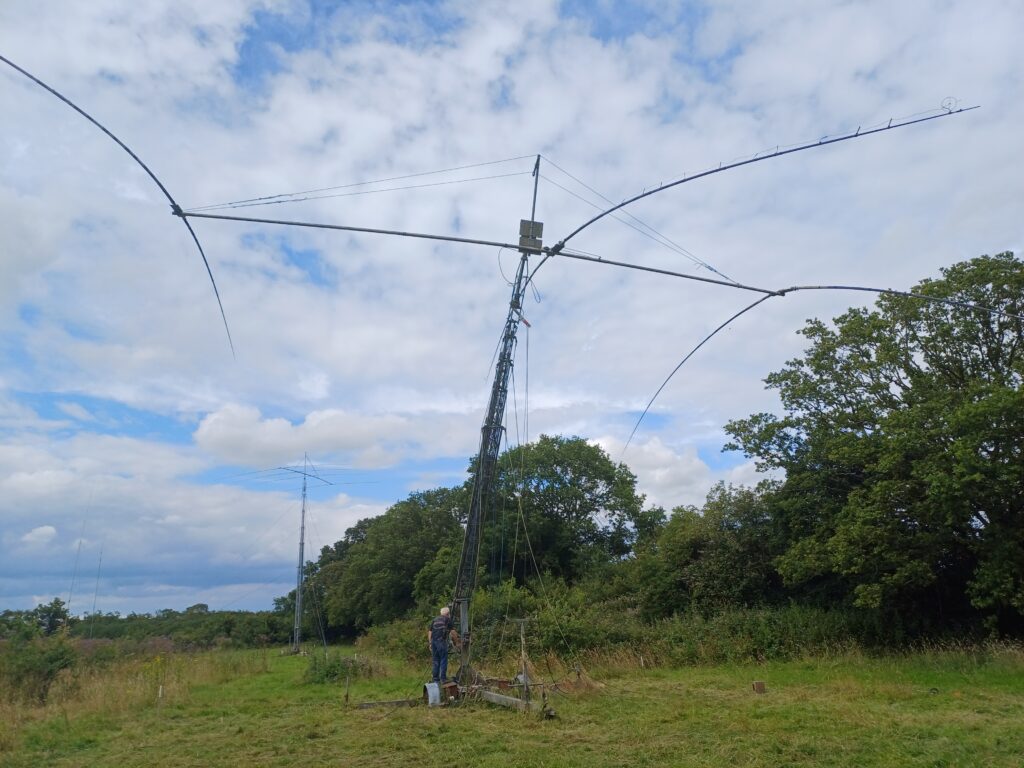
(40m yagi going up at M6T)
40m CW@M6T
We used a full size 3 element Yagi @ 90ft + a shortened 2 element Yagi @ 95ft. We also used a separate receive vertical located about 200m away for in-band receive, allowing us to inter-leave QSOs between the two operating positions.
The band was reasonably busy throughout the first three quarters of the contest, though rates reduced on Sunday morning with normal summertime conditions. In the early morning we had a good opening to North America. For the first time in many years we managed a QSO with JA on what is a difficult path in the summer from this far West. The only multiplier heard but not worked was a very weak WH7T (Hawaii). (from G4PIQ G0AEV M0HKB G2NF G0AKC G0VJG)

(M0NKR on 40m SSB)
40m SSB@G0DWV )
Chris, G0DWV hosted the 40m SSB station at his rural QTH, just north of Norwich in Norfolk; the station also co-hosts 80m CW. Hosting both 40 & 80, usually brings about some interstation rivalry with M6T hosting 40 CW and 80m SSB in Suffolk; in previous years it has given us a bit of friendly competition, trying to keep pace with the CW guys dragging our own total up. Many will know that SSB is more tiring that CW and on 40m that is definitely the case. The mixture of noise/splatter and general mayhem is exhausting on the brain, digging out weak DX, west coast US stations and HQs with 40 over 9 EU signals close by is made worse by having a big antenna system.
The 40m station consists of a large Optibeam 17-4 (3 elements on 40) yagi @32m, ICOM TRX and an Alpha 87A amp, firing via a stack match to both the Optibeam and a 40m Cushcraft D40 rotary dipole at 80ft. This combo allowed us to work effectively 3 directions at once, which has proved very worthwhile in previous years, so that’s what we did this year. However with the current conditions and the higher bands being open a lot of the time, by Sunday morning we were working practically no one; EU was too close so, so we tried passing to GM3WOJ who quickly gave it back and then as the skip conditions changed and the QSO rate fell to 1 Q every few minutes or slower, we passed to Steve GW0GEI, who was partnering us and hearing EU stations that we were not; so he closed the contest for us a couple of hours early. We could not hear many of the stations he was working in the last hours, so maybe we should consider this strategy next year when the band goes short. We and the 80CW boys had a great weekend. (M0NKR G4PVM G0DVJ)
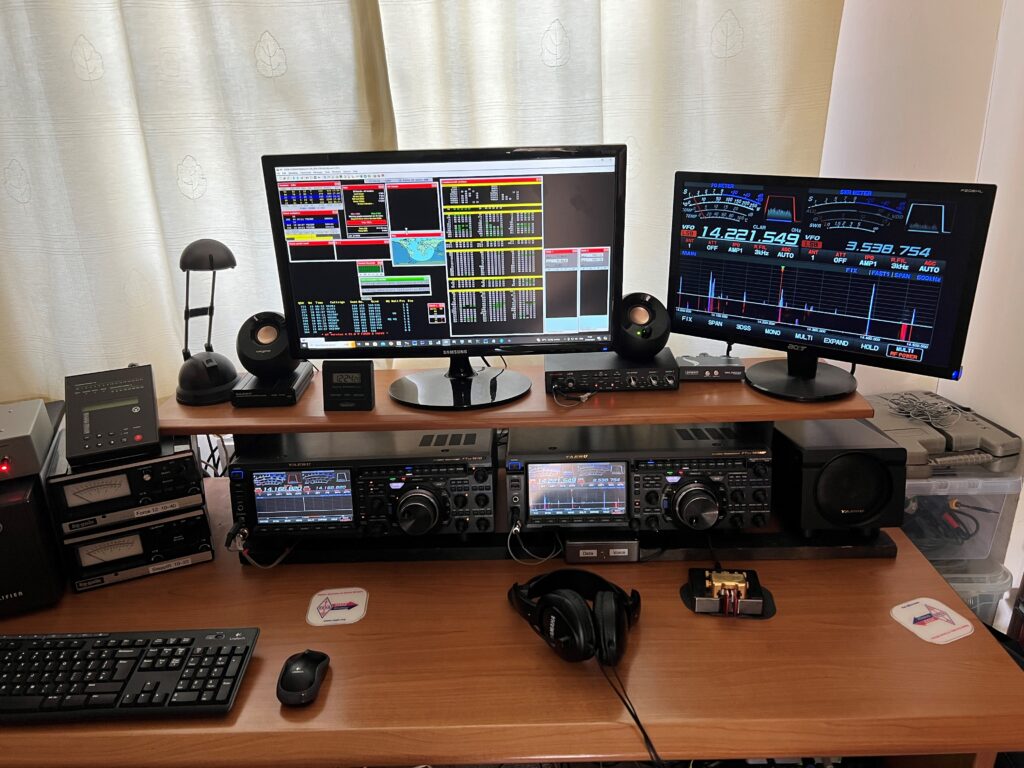
(20m CW operating position)
20m CW@G3BJ
On 20CW we had three Yagis in use, any two of which could be fed at the same time. One Yagi is fixed at 45 degrees (short path Asia), the other two are fully rotatable; one is reversable or capable of a bi-directional radiation pattern. We had two operating positions, one being the “run” station and the other looking for multipliers. Both had a “first one wins” interface, allowing either operator to grab the linear and antennas just by pressing the key. For next year, we want to improve the station to allow true in-band receive whilst the other station is transmitting. We found conditions on the Saturday to be below average, but they improved after dark and into Sunday. (M0BEW G3BJ)

(M0CTP and G7SLP on 20m SSB)
20m SSB@G6MC
Our preparation for 20M SSB began several months ago with refurbishment of our two 20M beams and with three new operators this year we had plenty of opportunity to build the team camaraderie necessary to operate on what we anticipated to be a busy band slot. Every year we build our experience, keeping the core of our technical capability stable, whilst incrementally taking on new ideas. This year we used an additinal receiver to help us find other in-band stations, with the second radio tuning in-step with the operator tuning the 2nd transceiver in the shack. A small audio mixer allowed either radio to be monitored for optimum reception. Our new (and old!) operators quickly picked up the nuances of the logging software and we were pleased with our team contribution to GR2HQ . All of us had thoughts to take forward to next year when we plan to be back to do even better. (G4MEM G4RCD G4BYG G5LSI G7SLP M0CTP)
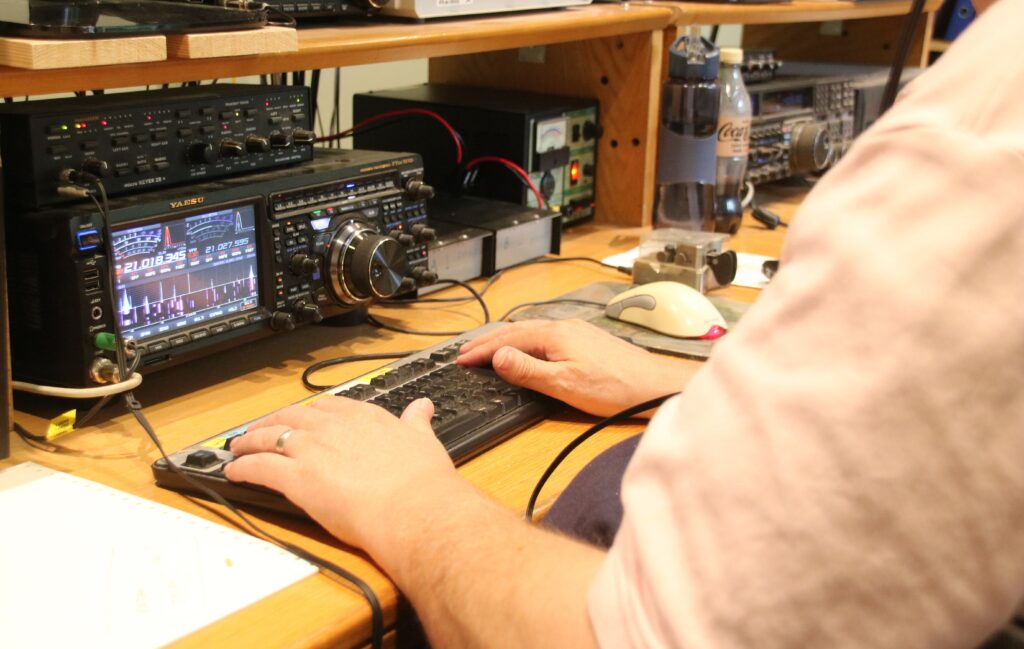
(G4MJS on 15m CW)
15m CW@G4FAL
15m CW was a great slot to run. The band was open to someone for the whole 24 hours – USA and Japan were both workable in the early hours of the morning which is a sign of the band in great shape. We had a simple station, single antenna, and no in-band station to mop up the non-DX QSOs, so inevitably our 2 ops missed a lot of those but along with invaluable help from 2 or more partner stations we kept the run rate going with a good quantity of DX. We’re pleased with the outcome and are looking forward to next time. (M0HDF G4MJS G4FAL)
15m SSB@GM4YXI
On 15m SSB there were stations to be worked for the entire 24hrs. The band was open to North America throughout the contest, and to Japan for much of the time. Short skip to Europe, where we get most of our QSOs, was however, generally quiet until the last 90 minutes. Three Yagis helped to achieve global coverage, including a 3el, designed and homebrewed from scrap bits in the days before the event and erected on the front lawn. (GM4YXI)

(GM3WOJ on 10m CW)
10m CW & 10m SSB@Various
Up on Ten Metres, we do things a bit differently.
To make the most of the mix of Es and F2 propagation, we have a network of five stations across the British Isles, from the North of Scotland to the Channel Islands, and from East Anglia to the Southwest of England.
With all stations in constant contact with each other, and all capable of both CW and SSB, a GR2HQ transmission on both modes was maintained for most of the contest. We followed where the best propagation was at any given time, with prompt changes of station when a rare multiplier appeared.
The Es this year wasn’t great, but the F2 path to South America was good, sometimes extending further, and some short openings to North America helped improve the score as well.
All in all, a very good 10m team effort for 24hrs which we all enjoyed.
(GM3WOJ Inverness, MM0GPZ & GM0LIR Blantyre, G0AEV@M6T Suffolk, G4FJK Devon and GU4YOX Guernsey)
Partners
GW4BVJ, 2E1FQO, GM7VSB, GW0GEI, GW0ETF, G4BYG, M0BPQ, G3YYD and M0TZX.
Outcomes in 2024
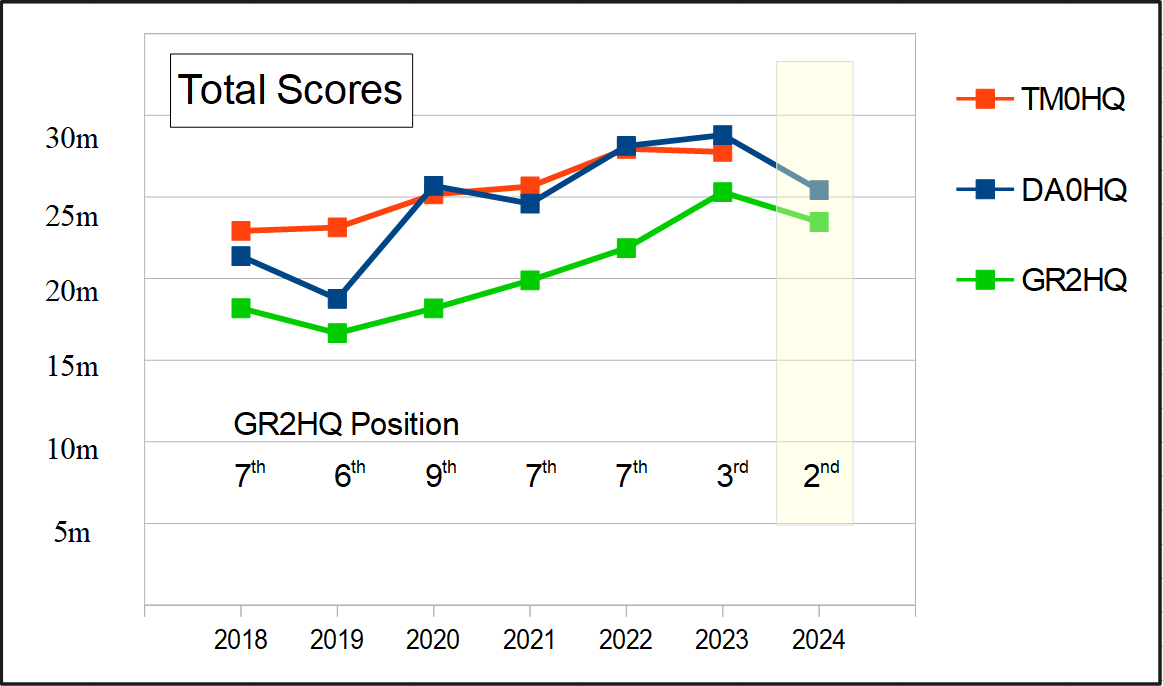
(GR2HQ raw scores compared with other HQ stations)
We are extremely pleased with our 2nd place position in 2024. We are making steady progress as a team and part of that is due to welcoming new host stations and new operators. We like to say that we are “working towards a winning position” and this year is evidence of that. We also benefitted from one of our main competitors choosing not to enter this year, which can be a factor in contest success at any level.
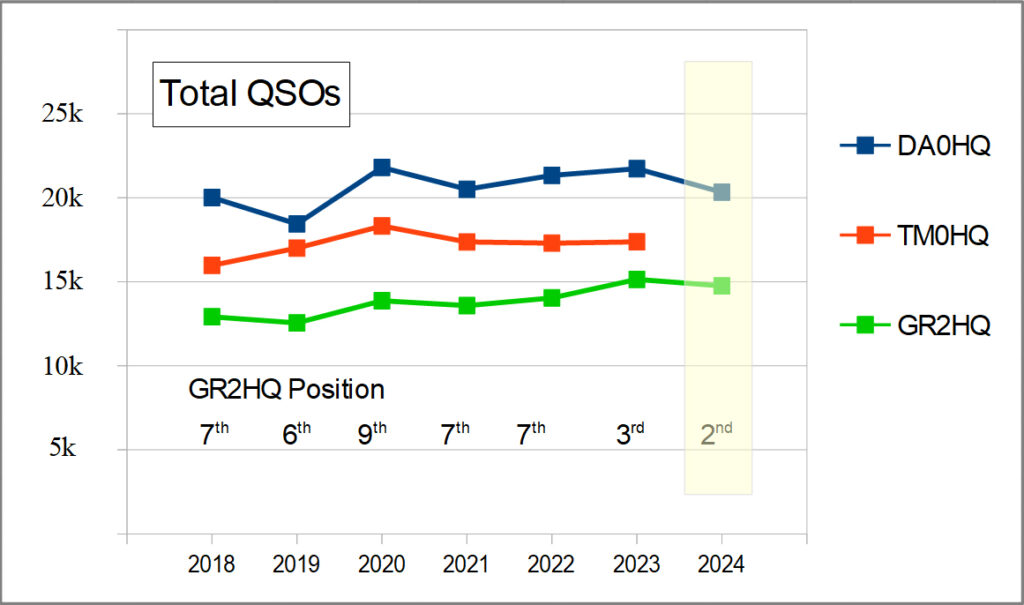
(GR2HQ QSO count compared with other HQ stations)


